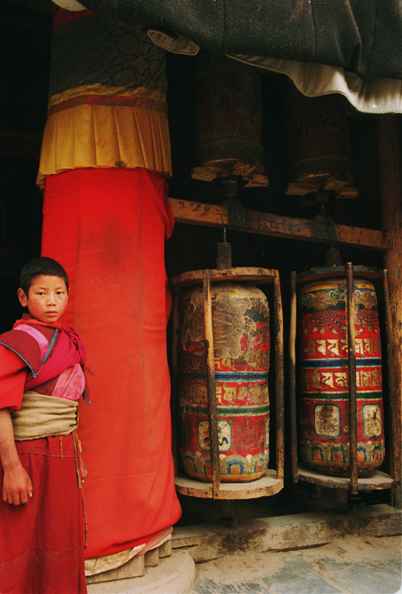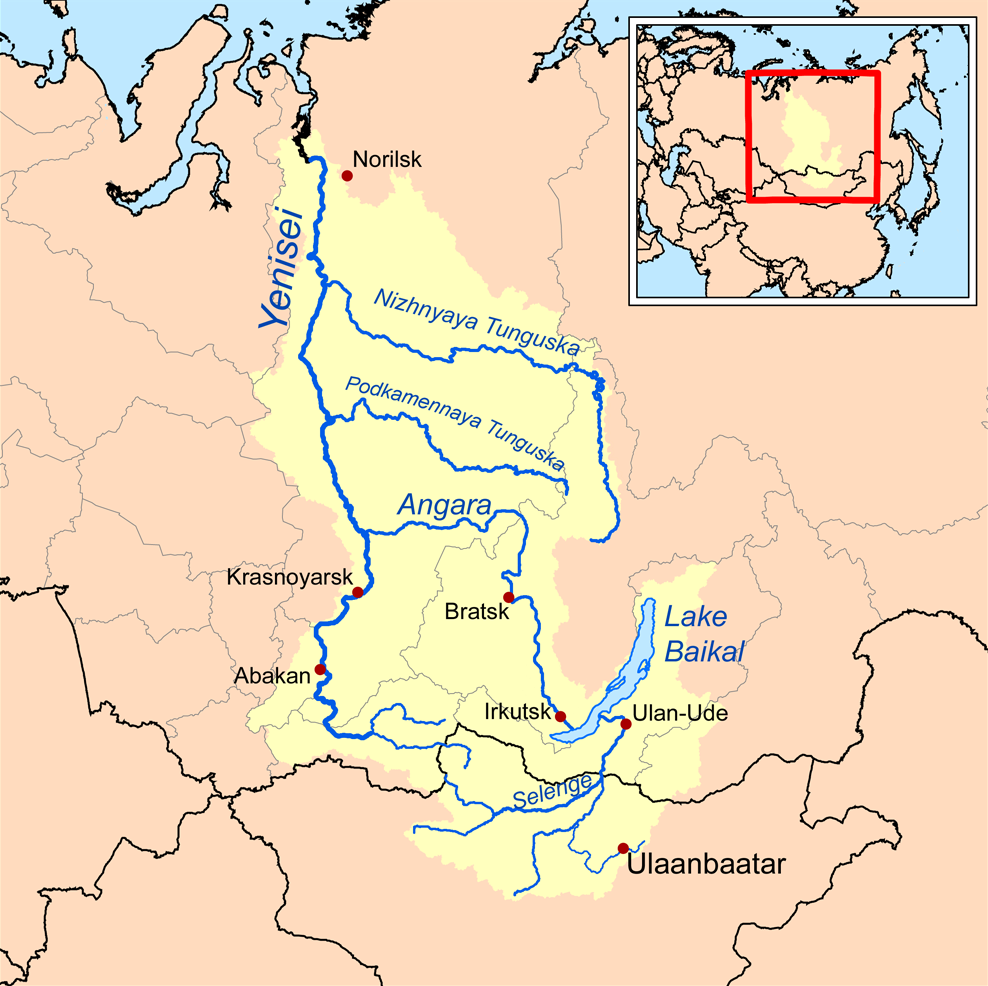|
Buddhism In Buryatia
Buddhism in Buryatia, a region in Siberia, Russia, has a deep-rooted history dating back to the 17th century when Tibetan Buddhism first arrived in the area. Initially adopted by ethnic groups like the Selenga and Zede Buryats, Buddhism gradually spread throughout the Transbaikal region. In 1741, it gained formal recognition as an official religion in the Russian Empire, with the establishment of Buddhist monastic universities known as datsans. Despite facing significant challenges during the Soviet era, including persecution and the closure of religious institutions, Buddhism in Buryatia has persisted and experienced a revival in the post-Soviet period. The Evenki people, Evenks living in Buryatia are also Buddhists. This unique form of Buddhism in Buryatia is primarily an extension of Vajrayana Buddhism, with a strong emphasis on the Gelug tradition from Tibet. While adherents revere Tsongkhapa alongside Shakyamuni Buddha, they have also incorporated elements of traditional, ... [...More Info...] [...Related Items...] OR: [Wikipedia] [Google] [Baidu] |
Shakyamuni Buddha
Siddhartha Gautama, most commonly referred to as the Buddha (),* * * was a śramaṇa, wandering ascetic and religious teacher who lived in South Asia during the 6th or 5th century BCE and founded Buddhism. According to Buddhist legends, he was born in Lumbini, in what is now Nepal, to royal parents of the Shakya clan, but Great Renunciation, renounced his Householder (Buddhism), home life to live as a wandering ascetic. After leading a life of mendicancy, asceticism, and meditation, he attained Nirvana (Buddhism), nirvana at Bodh Gaya, Bodh Gayā in what is now India. The Buddha then wandered through the lower Indo-Gangetic Plain, teaching and building a Sangha, monastic order. Buddhist tradition holds he died in Kushinagar and reached ''parinirvana'' ("final release from conditioned existence"). According to Buddhist tradition, the Buddha taught a Middle Way between sensual indulgence and severe asceticism, leading to Vimutti, freedom from Avidyā (Buddhism), ignora ... [...More Info...] [...Related Items...] OR: [Wikipedia] [Google] [Baidu] |
Amdo
Amdo ( �am˥˥.to˥˥ zh , c = 安多 , p = Ānduō ), also known as Domey (), is one of the three traditional Tibetan regions. It encompasses a large area from the Machu (Yellow River) to the Drichu (Yangtze). Amdo is mostly coterminous with China's present-day Qinghai province, but also includes small portions of Sichuan and Gansu provinces. In the 7th century, Amdo became a part of the Tibetan Empire until its dissolution in the 9th century. A local Tibetan theocracy called Tsongkha ruled the region from 997 to 1104. In the 13th century, Mongol forces conquered the area, which led to the beginning of a priest and patron relationship. From the 14th to the 16th century, the Ming Dynasty controlled some border areas of Amdo while Mongol presence remained significant. In the 1720s, the Yongzheng Emperor of Qing dynasty seized Amdo from the Dzungars and began forming the modern boundaries of Qinghai. He allowed most of the area to be administered by a series of local Tibet ... [...More Info...] [...Related Items...] OR: [Wikipedia] [Google] [Baidu] |
Labrang Monastery
Labrang Monastery (; Chinese: Lābǔléng Sì, 拉卜楞寺) is one of the six great monasteries of the Gelug school of Tibetan Buddhism founded by Je Lama Tsongkhapa. Its formal name is ''Genden Shédrup Dargyé Trashi Gyésu khyilwé Ling'' (). Labrang is located in Labrang Town of Xiahe (Sangqu) County, Gannan Tibetan Autonomous Prefecture, Gansu, in the traditional Tibetan area of Amdo. Labrang Monastery is home to the largest number of monks outside the Tibet Autonomous Region. Xiahe is about four hours by car from the provincial capital Lanzhou. In the early part of the 20th century, Labrang was by far the largest and most influential monastery in Amdo. It is located on the Daxia River, a tributary of the Yellow River. History The monastery was founded in 1709 by the first Jamyang Zhépa, Ngawang Tsöndrü. It is one of Tibetan Buddhism's most important monastery towns outside the Tibetan Autonomous Region. Labrang Monastery is situated at the strategic intersecti ... [...More Info...] [...Related Items...] OR: [Wikipedia] [Google] [Baidu] |
Khalka Mongols
The Khalkha (; ) have been the largest subgroup of the Mongols in modern Mongolia since the 15th century. The Khalkha, together with Chahars, Ordos and Tumed, were directly ruled by Borjigin khans until the 20th century. In contrast, the Oirats were ruled by Dzungar nobles and the Khorchins were ruled by Qasar's descendants. The two original major Khalkha groups were ruled by the direct male line descendants of Dayan Khan. The Baarin, Khongirad, Jaruud, Bayaud and the O'zeed (Ujeed) became the subjects of Dayan Khan's fifth son Achibolod. They formed the Southern Five Halhs. Seven northern Khalkha otogs: 1) Jalairs, Olkhonud; 2) Besut, Iljigin; 3) Gorlos, Keregut; 4) Khuree, Khoroo, Tsookhor; 5) Khukhuid, Khatagin; 6) Tanghut, Sartuul; and 7) Uriankhai д.и.н. Э. П. Бакаева, д.и.н. К. В. Орлова became subjects of Dayan Khan's youngest (could be third) son Geresenje (). Khotogoids are close in culture and language to the Khalkha Mongols. ... [...More Info...] [...Related Items...] OR: [Wikipedia] [Google] [Baidu] |
Lake Baikal
Lake Baikal is a rift lake and the deepest lake in the world. It is situated in southern Siberia, Russia between the Federal subjects of Russia, federal subjects of Irkutsk Oblast, Irkutsk Oblasts of Russia, Oblast to the northwest and the Republic of Buryatia to the southeast. At —slightly larger than Belgium—Lake Baikal is the world's List of lakes by area, seventh-largest lake by surface area, as well as the second largest lake in Eurasia after the Caspian Sea. However, because it is also the List of lakes by depth, deepest lake, with a maximum depth of , Lake Baikal is the world's List of lakes by volume, largest freshwater lake by volume, containing of water or 22–23% of the world's fresh surface water, more than all of the North American Great Lakes combined. It is also the world's ancient lake, oldest lake at 25–30 million years, and among the clearest. It is estimated that the lake contains around 19% of the unfrozen fresh water on the planet. Lake Baikal ... [...More Info...] [...Related Items...] OR: [Wikipedia] [Google] [Baidu] |
Buryat People
The Buryats are a Mongolic peoples, Mongolic ethnic group native to southeastern Siberia who speak the Buryat language. They are one of the two largest indigenous groups in Siberia, the other being the Yakuts. The majority of the Buryats today live in their titular homeland, the Republic of Buryatia, a Federal subjects of Russia, federal subject of Russia which sprawls along the southern coast and partially straddles Lake Baikal. Smaller groups of Buryats also inhabit Ust-Orda Buryat Okrug (Irkutsk Oblast) and the Agin-Buryat Okrug (Zabaykalsky Krai) which are to the west and east of Buryatia respectively as well as northeastern Mongolia and Inner Mongolia, Inner Mongolia, China. Traditionally, they formed the major northern subgroup of the Mongols. Buryats share many customs with other Mongolic peoples, including Nomadic pastoralism, nomadic herding, and erecting Yurt, gers for shelter. Today the majority of Buryats live in and around Ulan-Ude, the capital of the Buryat Republi ... [...More Info...] [...Related Items...] OR: [Wikipedia] [Google] [Baidu] |
Mongolia
Mongolia is a landlocked country in East Asia, bordered by Russia to the north and China to the south and southeast. It covers an area of , with a population of 3.5 million, making it the world's List of countries and dependencies by population density, most sparsely populated sovereign state. Mongolia is the world's largest landlocked country that does not border an Endorheic basin, inland sea, and much of its area is covered by grassy steppe, with mountains to the north and west and the Gobi Desert to the south. Ulaanbaatar, the capital and List of cities in Mongolia, largest city, is home to roughly half of the country's population. The territory of modern-day Mongolia has been ruled by various nomadic empires, including the Xiongnu, the Xianbei, the Rouran, the First Turkic Khaganate, the Second Turkic Khaganate, the Uyghur Khaganate and others. In 1206, Genghis Khan founded the Mongol Empire, which became the largest List of largest empires, contiguous land empire i ... [...More Info...] [...Related Items...] OR: [Wikipedia] [Google] [Baidu] |
Khitan People
The Khitan people (Khitan small script: ; ) were a historical Eurasian nomads, nomadic people from Northeast Asia who, from the 4th century, inhabited an area corresponding to parts of modern Mongolia, Northeast China and the Russian Far East. As a people descended from the proto-Mongols through the Xianbei, Khitans spoke the now-extinct Khitan language, a Para-Mongolic languages, Para-Mongolic language related to the Mongolic languages. The Khitan people founded and led the Liao dynasty (916–1125), which dominated a vast area of Siberia, Mongolia and Northern China. The Khitans of the Liao dynasty used two independent writing systems for their language: Khitan small script and Khitan large script. After the fall of the Liao dynasty in 1125 following the Jin dynasty (1115–1234)#Rise of the Jin and fall of the Liao, Jurchen invasion, many Khitans followed Yelü Dashi's group westward to establish the Qara Khitai or Western Liao dynasty, in Central Asia, which lasted nearly a ... [...More Info...] [...Related Items...] OR: [Wikipedia] [Google] [Baidu] |





